COORDINATING BRICKS WITH CLICKS
How some ECPs are finding the right balance for their business
By Erinn Morgan
increasingly, financed contenders such as Warby Parker and 1-800-CONTACTS are leading ECPs to wonder if they should jump in—or jump out and avoid online retail. “Our industry is panicking right now,” says Brad Childs, vice president of the 13-store, Pittsburgh-based Eyetique. “But everybody just needs to take a step back. I know that’s easy for me to say since I am getting into this.” Childs’ website Eyetique.com, has been ambitiously re-launched.
“We are going for Warby Parker,” says Childs. “If they’re going to rattle our industry, then we’re going to rattle back. I’m not going to cry about it; instead, I want to aggravate them.”
Many independent ECPs are still waiting and watching to determine their online niche. While some vendors have programs to help ECPs set up retailing websites, here Eyecare Business focuses on four businesses going it on their own.
CASE STUDY 1
SHOP: Eyetique, 13 optical locations, Pittsburgh
WEBSITE: Eyetique.com
PRODUCTS SOLD ONLINE: Contact lenses, prescription eyewear, plano sunglasses, accessories, and lenses.
ONLINE SALES STRATEGY: Until last month, Pittsburgh-based optical chain Eyetique had an informational website on which customers could also purchase contact lenses and make eye exam appointments.
All that changed when the business re-launched its site as an online sales portal, offering items from prescription eyewear and plano sunglasses to contact lenses and accessories.
“My big plan is to compete with Warby Parker, 1-800-Contacts, and Eyeglasses.com,” says Childs. He notes, however, that selling online on a larger scale may not be for every ECP.
For starters, launch costs can be prohibitive. “By the time we launch, we’ll have $150,000 into the website,” he says, noting that Magenta, the eBay ecommerce platform utilized for the site, alone cost $15,000.
“I can open a store for $150,000 with full inventory. Plus, it’s not an ‘If you build it they will come’ scenario.” Childs notes that online retailing hopefuls have to put together a complete staff, have a budget in place, and put in a large amount of money and thousands of hours just to get started.
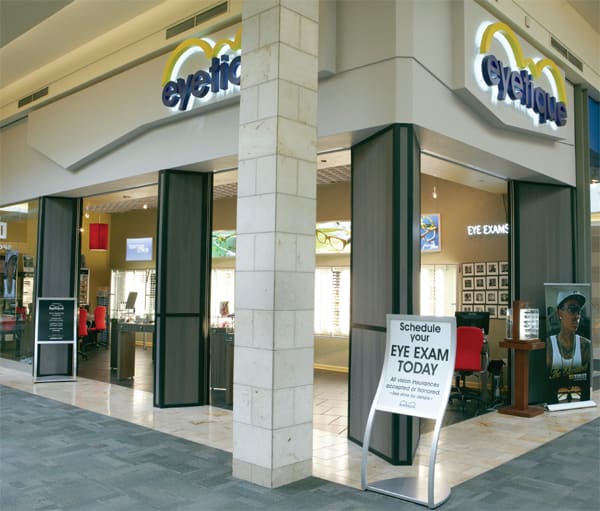
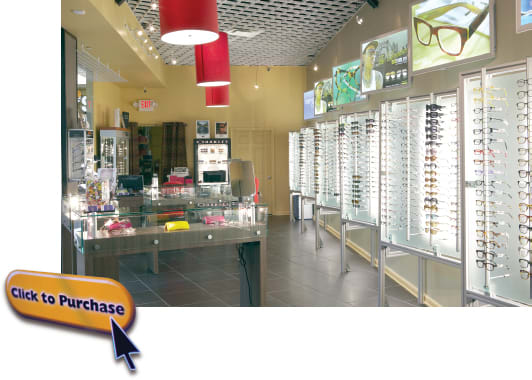
Eyetique has 13 optical locations in the Pittsburgh area and has recently revitalized its website to aim for online sales as well |
“We are looking at it like we’re building a new store; we’re planning to make money after the first year or two,” he adds.
BALANCING BRICKS & CLICKS: “My advice to independent ECPs is to focus on being a brick-and-mortar store,” says Childs. “We are retailers and that’s what we do. The people who are going to shop online will do so, and the people who are coming into the store aren’t going to shop online.”
On handling those customers who do buy online but come into your business for services, he empathizes that he does have people coming in asking for their PD or eyewear adjustments. “For those who buy from Warby Parker and come in for a PD, we simply say, ‘Yes, we are going to be here for you to adjust your glasses and take your PD. We will do this and we just hope that next time you’ll consider buying here.”
| ONLINE SHOPPING BY THE NUMBERS |
|---|
When it comes to online shopping, the numbers are large and growing. $72 billionU.S. e-commerce dollars spent in 2002 $256 billionU.S. e-commerce dollars spent in 2011 $1.25 billionU.S. e-commerce dollars spent on Cyber Monday 2011 $162 billionThe share of U.S. online revenues generated by retail shopping websites in 2011 $48 billionThe share of U.S. online revenues generated by Amazon.com 137 millionThe number of U.S. online shoppers in 2011 175 millionThe number of U.S. online shoppers projected in 2016 100.4 millionThe average number of unique visitors to Amazon.com monthly in the second quarter of 2012 23.2 millionThe average number of unique visitors to Target.com monthly in the second quarter of 2012 All statistics courtesy Statista.com. |
TOP TIP: “Setting up an online sales business is ungodly expensive to break into,” says Childs. “It’s tough unless you are willing to put a lot of skin in the game and put the right people behind you that understand the online world. If you don’t have deep pockets, don’t even go there.”
CASE STUDY 2
SHOP: Sports Optical, one location, Denver
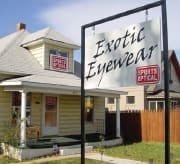
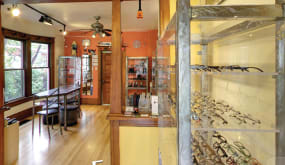
Sports Optical, with one location in Denver, has a website designed to drive traffic to the location and opted to discontinue online sales |
WEBSITE: Sportsoptical.com
ONLINE SALES: Nothing, per se, but much of the sports eyewear selection is displayed online.
ONLINE SALES STRATEGY: With its name defining this optical retailer’s specialty, Sports Optical is also known for its unique prescription eyewear selection and service. While much of selection is displayed online—and its home page says “Shop now for quality products from…” with links to several sports eyewear selections—Sports Optical actually doesn’t sell anything directly online.
“We sold two specific lines’ products online for some time and it was very lucrative, but that arena has been saturated,” says Bret Hunter, Sports Optical owner, who notes that he began selling online in 1998 and, at the time, began by getting one or two sales a day via the website. By 2000, the site was buzzing with daily online orders, but by 2004, the online market had become filled with discounters and counterfeiters.
“We strive to sell quality and stick to retail pricing, and you just can’t compete with knockoffs and people willing to make $5 off a product,” says Hunter. “So, in 2004, we took the online sales option off our site.”
BALANCING BRICKS & CLICKS: “The Internet is cool, and every optical shop should have a site with their hours, information about the business and staff, and links to the products they carry,” says Hunter. “It works for us—about 20 percent of our overall business comes from the Internet, with people calling in to get the frames they’ve seen on our website.” As far as selling directly online, Hunter says that it’s a big effort. “It’s a lot of work; it’s really a full-time gig to do it right.”
TOP TIP: For those interested in boosting in-store sales by adding product links onto their website, Hunter suggests highlighting. “We don’t list everything from every manufacturer,” he says. “We list what we feel to be the best products [for us], and we try to update it regularly, about every three months.”
CASE STUDY 3
SHOP: Selima Optique, seven locations, including four in NewYork, one in Santa Monica, and two in Paris
WEBSITE: Selimaoptique.com
ONLINE SALES: Frames only (no Rx) and sunglasses.
ONLINE SALES STRATEGY: Direct sales through Selima Optique’s website account for two or three percent of sales, says Selima Salaun, designer and CEO of Selima Optique.
“Our direct online sales are only a small part of the website’s purpose and activity,” she notes. “We mostly create indirect sales by referring our customers to our stockists; about two thirds of the customer emails from our website are actually asking for location referrals.”
Salaun notes that having the current frame and sunglass collections on the website helps both stockists and customers by acting as a “virtual line sheet.” In the end, she says that nothing can replace the in-store experience. “This is the core experience and where true customer service lives. Trying to compete with the in-store experience online is a bad model, in my opinion.”
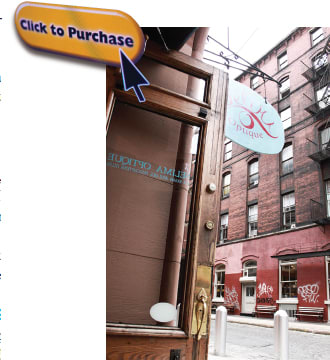
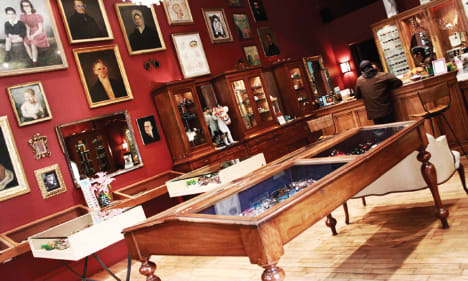
With shops around the world, Selima Optique’s website is a tool for people who would not be able to purchase its eyewear otherwise |
BALANCING BRICKS & CLICKS: Online business is complementary to the Selima Optique stores. “Though the sales are tiny in quantity, the fact that our site is also an e-commerce site makes it more participatory versus a ‘brochure’ website,” Salaun says. “Some of the web energy feeds our stores and stockists, and vice versa.”
In addition, this level of e-commerce does not necessitate a dedicated staff. “Our team handles everything from wholesale orders and retail merchandising to answering website driven location requests and fulfilling the online orders. It’s actually simple once you are set up.”
TOP TIP: Consistency is important. “Make sure your products are priced the same online as in stores,” says Salaun. “Ultimately, the relationship between the dispensing optician and client is irreplaceable, and trying to recreate this online seems pointless. But, every online experience helps to multiply customer engagement and benefits all aspects of the business.”

With a staff of two handling brick-and-click sales, Oregon’s A Sight for Sport Eyes focuses on web sales |
| Q&A: A Bird’s Eye View |
|---|
Eyevertise is a website design and support firm based in Palatine, IL, that focuses on the optical industry. To date, they’ve built more than 100 websites for eyecare professionals. Here, we check in with Eyevertise partner Steve Freed on his view of e-commerce in optical. Q: Does Eyevertise set up online selling capabilities for optical business? A: Eyevertise expects to deploy an eyewear e-commerce solution in the spring of 2013. Currently, Eyevertise offers many other solutions to help ECPs with their Internet presence, such as website development, mobile Smartphone websites, search engine optimization, branding and marketing, social media, and more. Q: What do these optical businesses primarily sell online? A: Currently, many of our clients offer contact lenses online. Q: Have you seen this become (or can it become) a robust part of their overall business? A: We are projecting that more than 80 percent of our current clients will eventually purchase an e-commerce platform from Eyevertise. This demand shows the potential to increase revenues at the practice level. Q: How can ECPs best balance their two businesses (online sales and in-store sales)? A: The practice must allocate resources to make the online commerce a success as they currently do with their in-store business. Q: Does one business detract from the other or can they complement one another? A: An online commerce business will take additional resources, otherwise it will detract from the current brick-and-mortar locations. Q: Do most ECPs with online sales have a dedicated employee handling online sales? A: Absolutely. Sales staff, marketing individuals, and technology will play a big part in the success of an ECP’s online commerce business. |
CASE STUDY 4
SHOP: A Sight for Sport Eyes, one location, Westland, OR
WEBSITE: Sporteyes.com
PRODUCTS SOLD ONLINE: Rx and plano sports sunwear, goggles, kids’ sunwear, and accessories.
ONLINE SALES STRATEGY: The lion’s share, 75 percent of this sports sunwear retailer’s business is done via online sales and 25 percent comes from its storefront. With minimal traffic in the brick-and-mortar shop (averaging about two customers per day), this retailer runs both businesses with a skeleton staff.
“We do it all, just me and one other person on staff,” says Shannen Knight, owner and dispensing optician. “We do outsource the updating of the site, such as changing prices and updating the catalog.”
BALANCING BRICKS & CLICKS: Knight says that despite the minimal amount of in-store business, she sees a benefit to keeping A Sight for Sport Eyes’ shop open.
“It benefits us to have the storefront,” she says, noting that the store is about 700 square feet with 1,000 sports sunwear frames on display.
“We tried running things only online and we had so many people who still wanted to come in to see the products in person and try them on. In addition, some manufacturers wanted us to have a brick-and-mortar store to allow us to also sell online,” she adds.
TOP TIP: Shannen suggests making the local community aware of your e-commerce platform. “We get a number of people who order online and then realize we’re local and come back in to make exchanges and try stuff on.” EB



